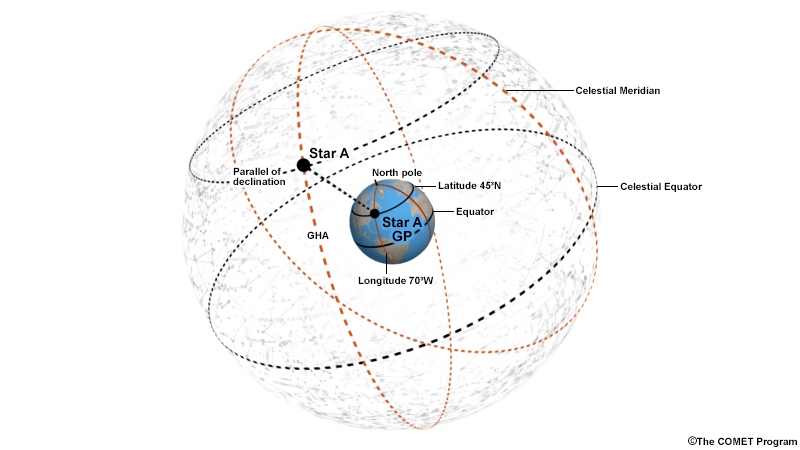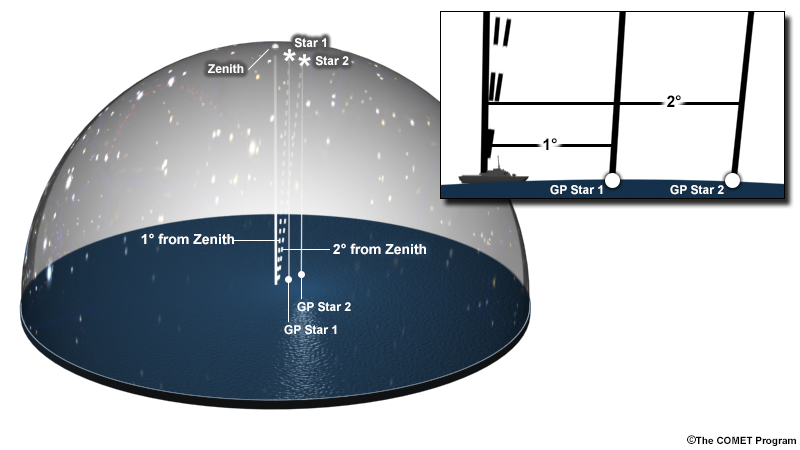Basics » Using the Celestial Sphere for Geo-location
Let's recap. At this point we know that for each star, there is only one place on Earth where it is directly overhead; that is, the star is at the zenith. This location on the surface of the Earth is known as the star's geographic position. Therefore, if a star is at our zenith, we are at its geographic position. If we know the star's GHA and Dec, we know our longitude and latitude through the relationship: Geographic position of a star = its (west longitude, latitude) = its (GHA, Dec).

There are two main problems that we have to overcome. The first problem is that due to Earth's rotation, the GHA of every object changes continuously. (Declination changes also, but much, much more slowly). So how do we know the star's GHA and Dec?
The second problem is that there usually is not a star directly overhead.

The first problem is solved with a good watch and an almanac. Today, good watches are inexpensive, so this is not an issue (Note: this was not true 200 years ago). And the United States Naval Observatory in the US, along with Her Majesty's Nautical Almanac Office in the United Kingdom, produce the book, "The Nautical Almanac” each year. Using The Nautical Almanac, or some trustworthy apps or web sites, it is easy to find the GHA and Dec for bright objects throughout the year. We will come back to The Nautical Almanac later in this module.

The second problem—of there rarely being a star directly overhead—is solved by understanding that if a star is not quite directly overhead, then we are not quite at its geographic position. For example, if the star is one degree away from our zenith—called zenith distance—then we are one degree away from its geographic position. If the star is two degrees away from our zenith—that is, its zenith distance equals two degrees—then we are two degrees away from its geographic position. And so on.